A Ruggedness Improved Mobile Radio Frequency Power Amplifier Module with Dynamic Impedance Correction by Software Defined Atomization
Abstract
:1. Introduction
- Larger power requirement for High Power User Equipment (HPUE)—Average output power should increase by 3 dB.
- Signal with higher Peak to Average Power Ratio (PAPR)—Peak output power should increase more than 3 dB.
- Higher supply voltage—The voltage can be increased more than 5 V with boosting technique.
- Thermal issues with smaller module size—Effective ruggedness should degrade.
2. The Failure Mechanism in an HBT RF PA under a Mismatch
3. Protection by Adaptive Impedance Correction
3.1. Operating Principle of Protection
- Failure zone: A PA fails when the load impedance is inside this area.
- Safe zone: A PA does not fail when the load impedance is inside this area.
- Impractical zone: It is hard for this impedance region to exist, due to a post-PA loss when the PA output is defined as a reference plane.
3.2. Impedance Mismatch Detector
3.3. Dynamic Impedance Corrector
4. Experimental Verification
5. Conclusions
Author Contributions
Funding
Conflicts of Interest
References
- Yamamoto, K.; Suzuki, S.; Mori, K.; Asada, T.; Okuda, T.; Inoue, A.; Miura, T.; Chomei, K.; Hattori, R.; Yamanouchi, M.; et al. A 3.2-V operation single-chip dual-band Al-GaAs/GaAs HBT MMIC power amplifier with active feedback circuit technique. IEEE J. Solid State Circuits 2000, 35, 1109–1120. [Google Scholar] [CrossRef]
- Luo, X.; Halder, S.; Hwang, J. Rugged HBT Class-C power amplifiers with base-emitter clamping. In Proceedings of the 2011 IEEE MTT-S International Microwave Symposium, Baltimore, MD, USA, 5–10 June 2011. [Google Scholar]
- King, J. High VSWR Mismatch Output Stage. U.S. Patent 6,137,366, 24 October 2000. [Google Scholar]
- Scuderi, A.; Scuderi, A.; Carrara, F.; Palmisano, G. A VSWR-rugged silicon bipolar RF power amplifier. In Proceedings of the Bipolar/BiCMOS Circuits Technology Meeting, Santa Barbara, CA, USA, 9–11 October 2005; pp. 116–119. [Google Scholar]
- Bezooijen, A.; Straten, F.V.; Mahmoudi, R.; Roermund, A.H.M.V. Power amplifier protection by adaptive output power control. IEEE J. Solid State Circuits 2007, 42, 1834–1841. [Google Scholar] [CrossRef]
- Shin, H.; Ju, H.; Chang, M.F.; Nellis, K.; Zampardi, P. An output VSWR protection Circuit using collector/emitter avalanche breakdown for SiGe HBT power amplifiers. IEICE Trans. Electron. 2004, 87, 1643–1645. [Google Scholar]
- Scuderi, A.; La Paglia, L.; Scuderi, A.; Carrara, F.; Palmisano, G. A VSWR-protected silicon bipolar RF power amplifier with soft-slope power control. IEEE J. Solid State Circuits 2005, 40, 611–621. [Google Scholar] [CrossRef]
- Bent, G.; Wanum, M.; Hek, A.; Graaf, M.; Vliet, F. Protection circuit for high power amplifiers operating under mismatch conditions. In Proceedings of the 2007 European Microwave Integrated Circuit Conference, Munich, Germany, 8–10 October 2007; pp. 158–161. [Google Scholar]
- Ferretti, J.; Preis, S.; Heinrich, W.; Bengtsson, O. VSWR protection of power amplifiers using BST components. In Proceedings of the 2016 German Microwave Conference, Bochum, Germany, 14–16 March 2016; pp. 445–448. [Google Scholar]
- Karoui, W.; Parra, T. A protection circuit for HBT RF power amplifier under load mismatch conditions. In Proceedings of the 2008 Joint 6th International IEEE Northeast Workshop on Circuits and Systems and TAISA Conference, Montreal, QC, Canada, 22–25 June 2008; pp. 241–244. [Google Scholar]
- Heijningen, M.; Bent, G.; Houwen, E.H.; Chowdhary, A.; Vliet, F.E. L-band AlGaN/GaN power amplifier with protection against load mismatch. In Proceedings of the 2013 European Microwave Conference, Nuremberg, Germany, 6–10 October 2013; pp. 408–411. [Google Scholar]
- Heijningen, M.; Bent, G.; Houwen, E.; Chowdhary, A.; Vliet, F.E. VSWR-protected 90 W L-band AlGaN/GaN power amplifier. In Proceedings of the 2014 IEEE MTT-S International Microwave Symposium (IMS2014), Tampa, FL, USA, 1–6 June 2014; pp. 1–3. [Google Scholar]
- Sinha, S.; Rao, C.V.N.; Pujara, D. Balanced Power amplifier protection against load mismatch. IEEE Microw. Wirel. Compon. Lett. 2018, 28, 165–167. [Google Scholar] [CrossRef]
- Ji, D.; Jeon, J.; Kim, J. A Novel Load Mismatch Detection and Correction Technique for 3G/4G Load Insensitive Power Amplifier Application. IEEE Trans. Microw. Theory Tech. 2015, 63, 1530–1543. [Google Scholar] [CrossRef]
- Ji, D.; Jeon, J.; Kim, J. A linearity-improved multiband envelope tracking Tx power amplifier under antenna mismatch for mobile applications. Microw. Opt. Technol. Lett. 2018, 60, 2320–2325. [Google Scholar] [CrossRef]
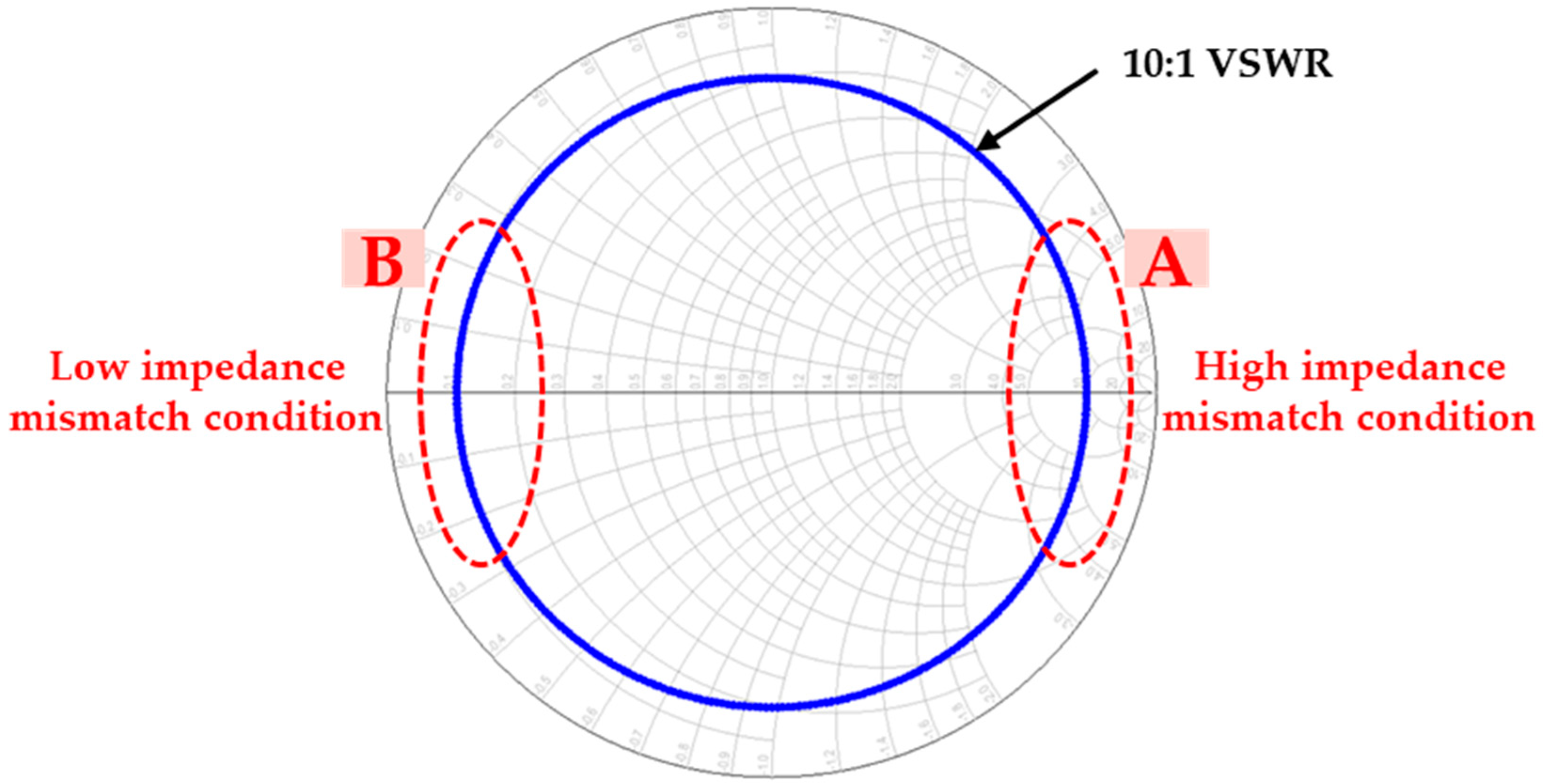
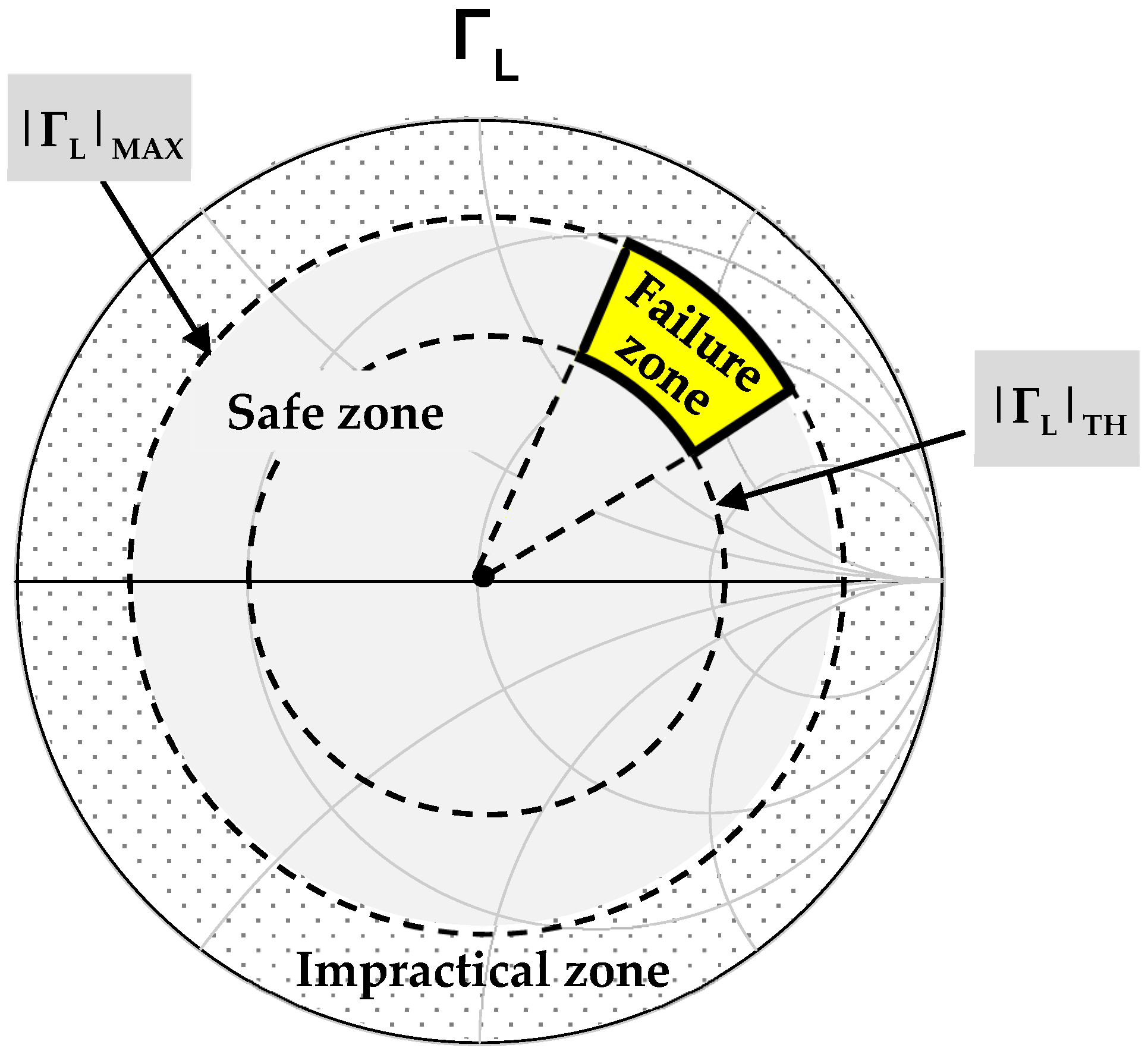
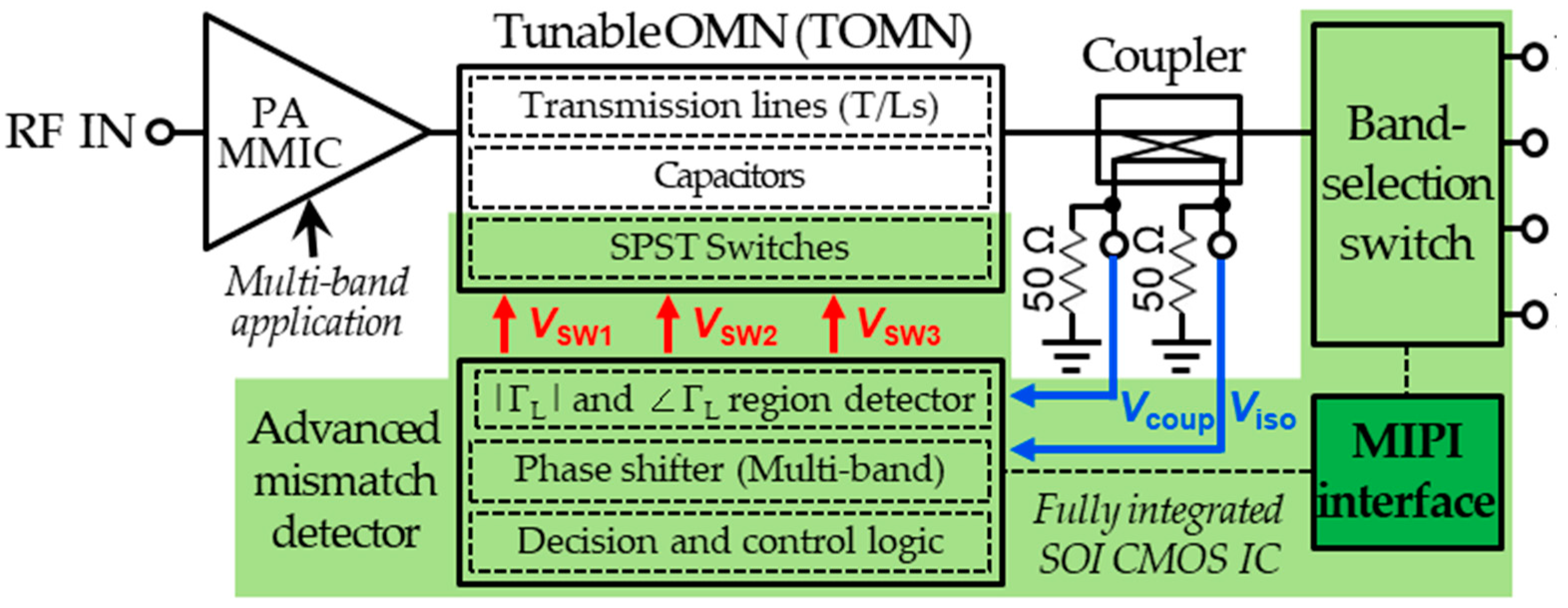

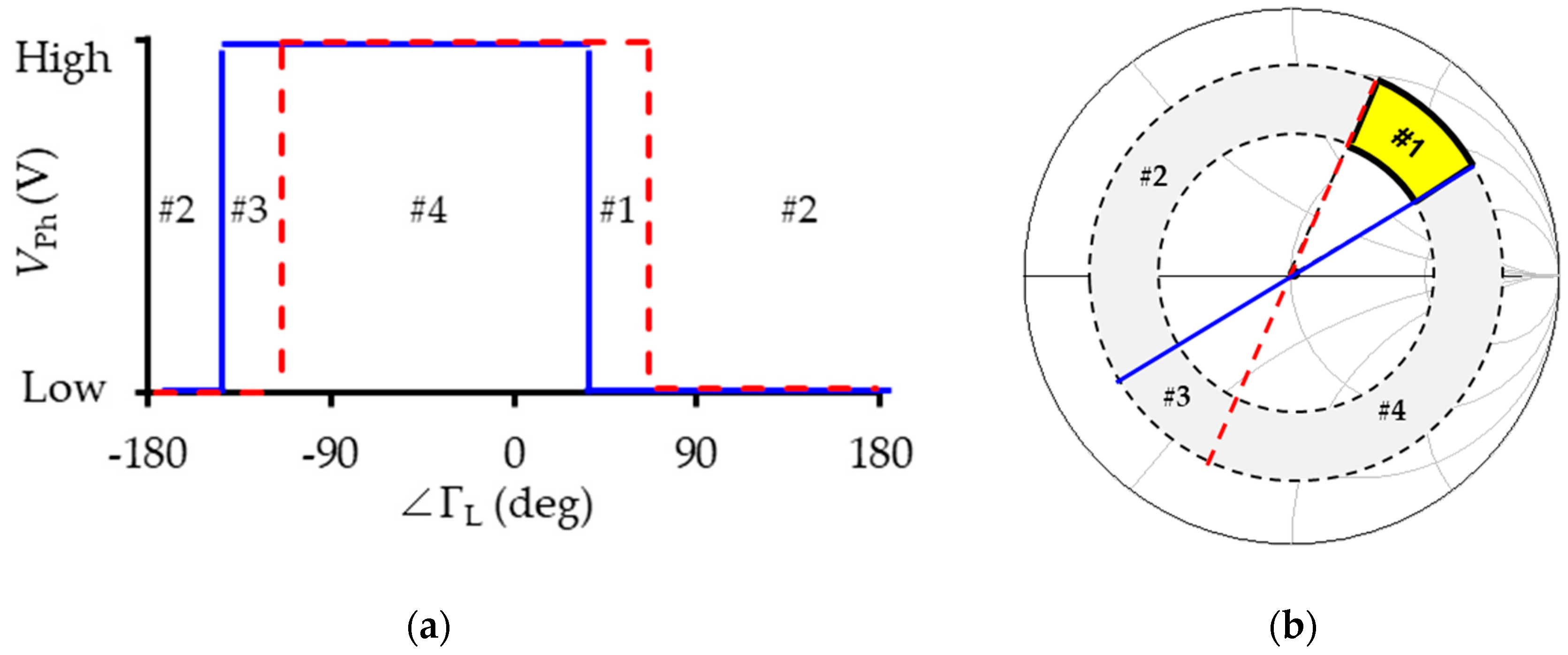
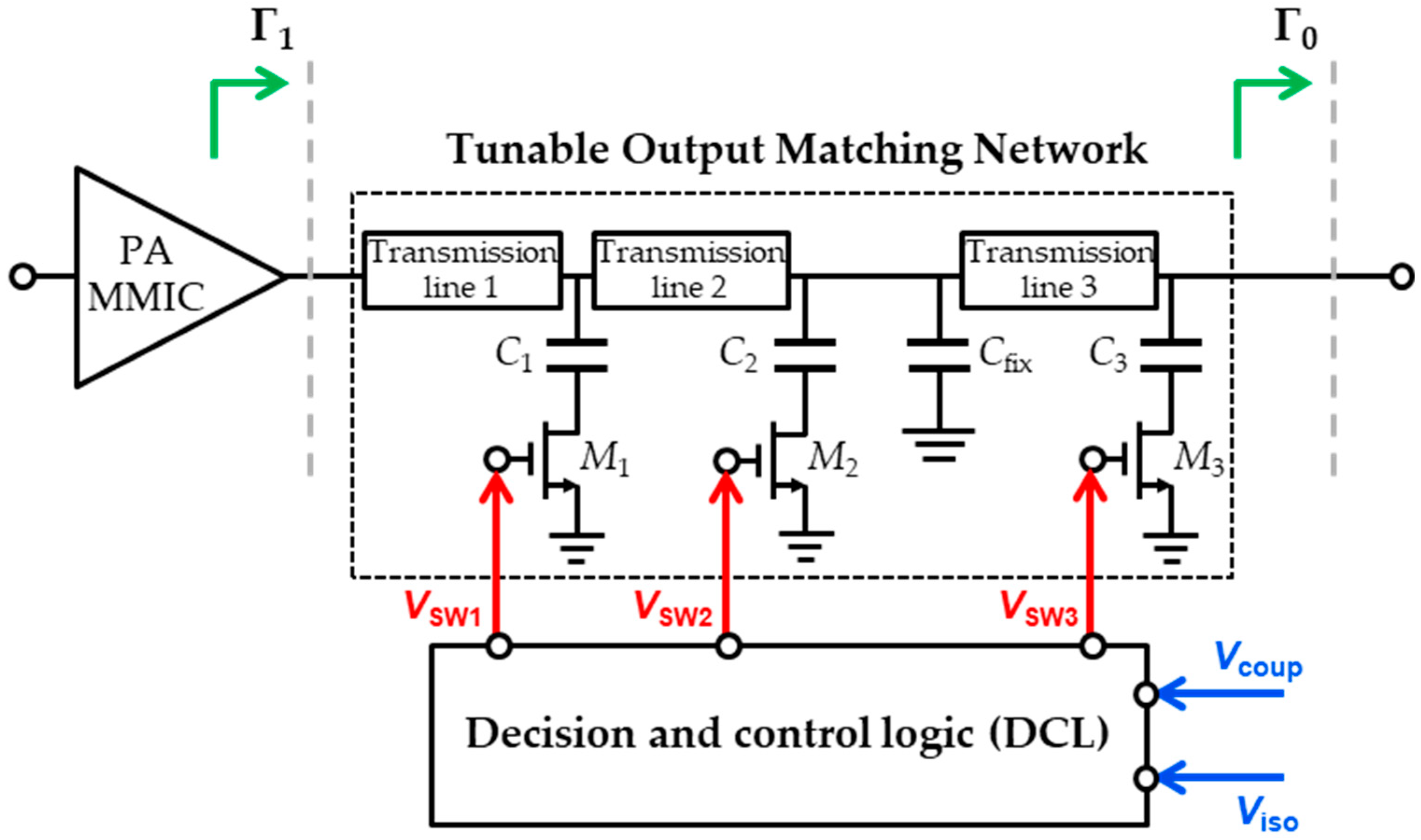
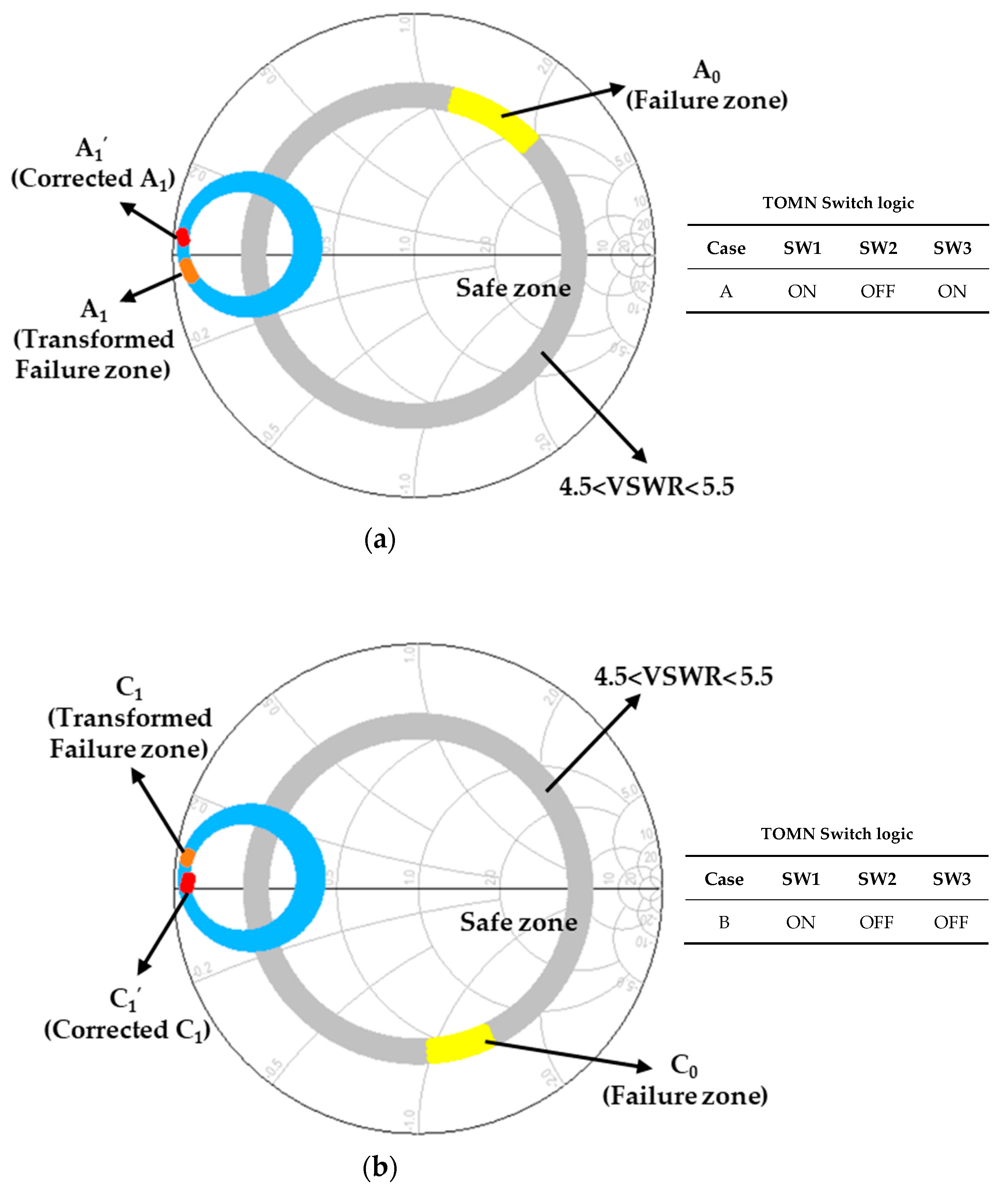
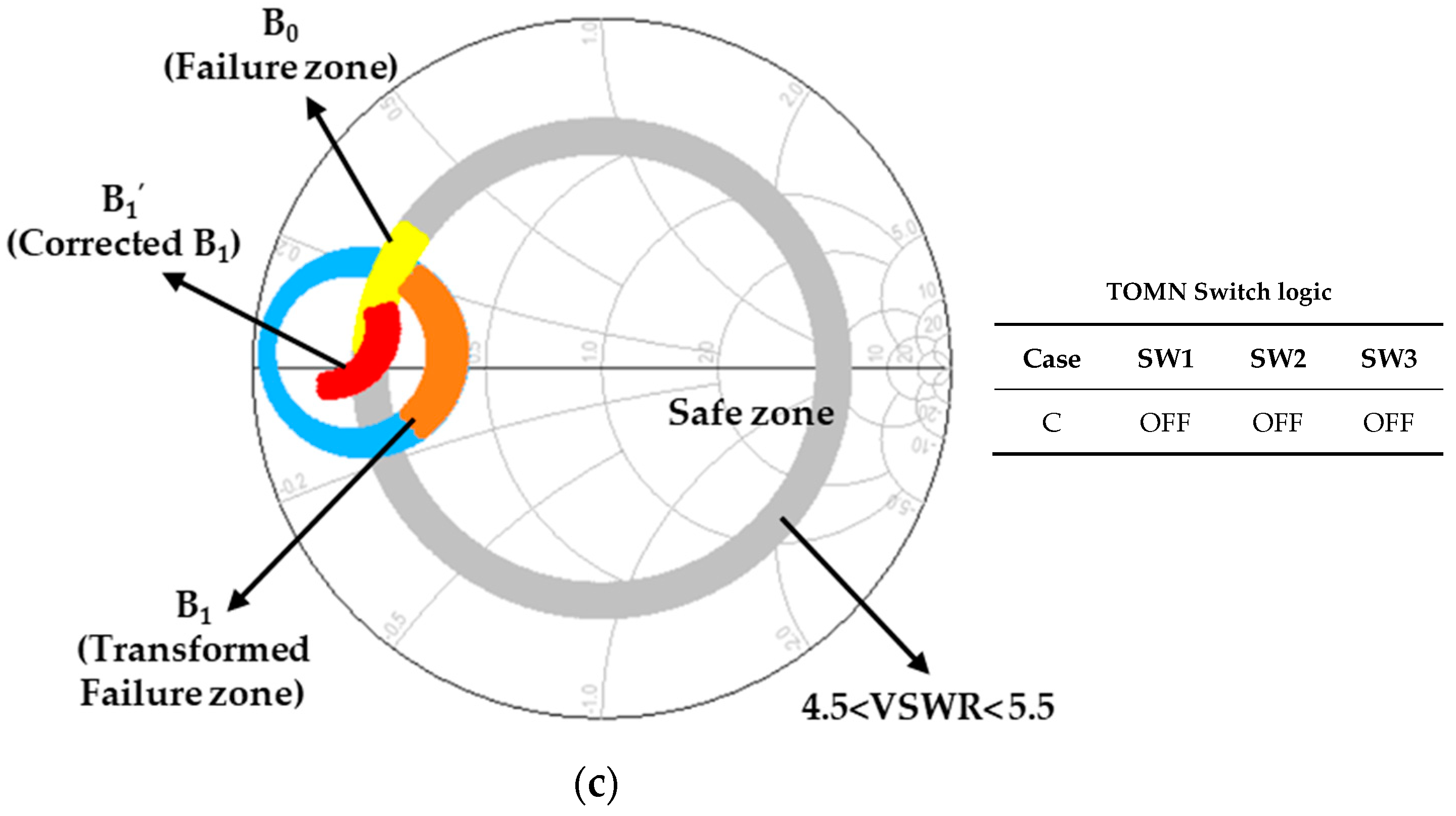

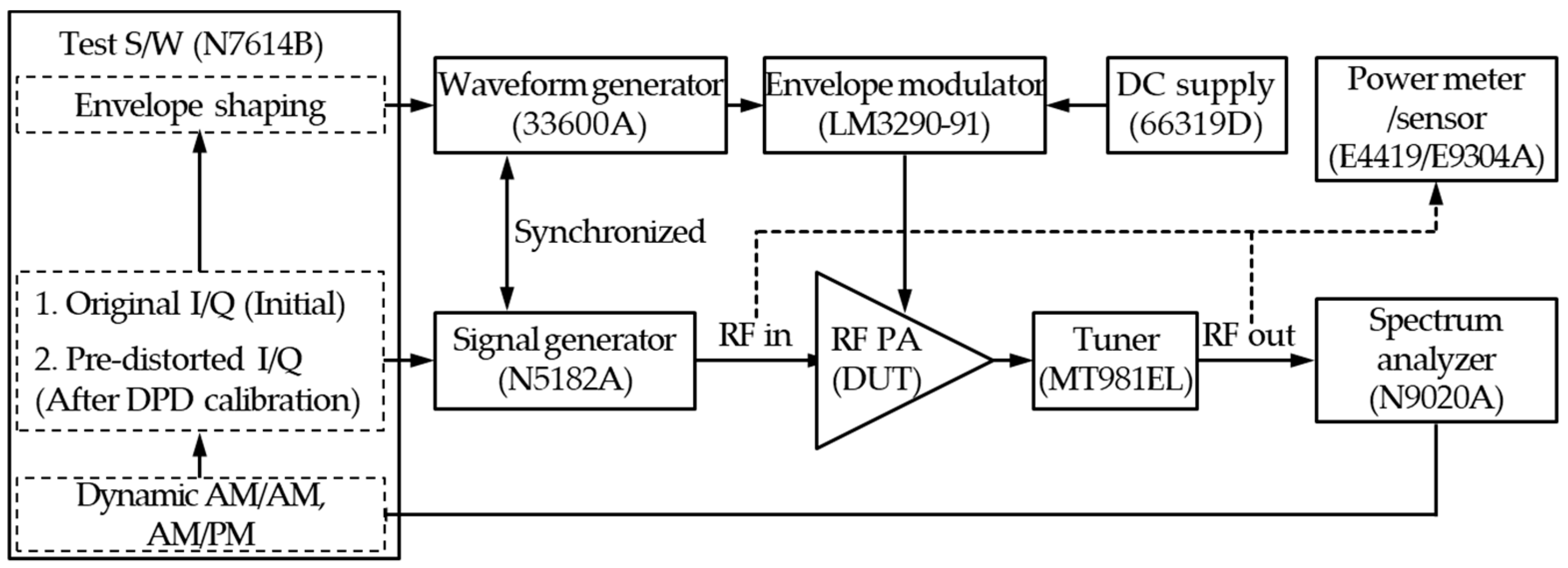
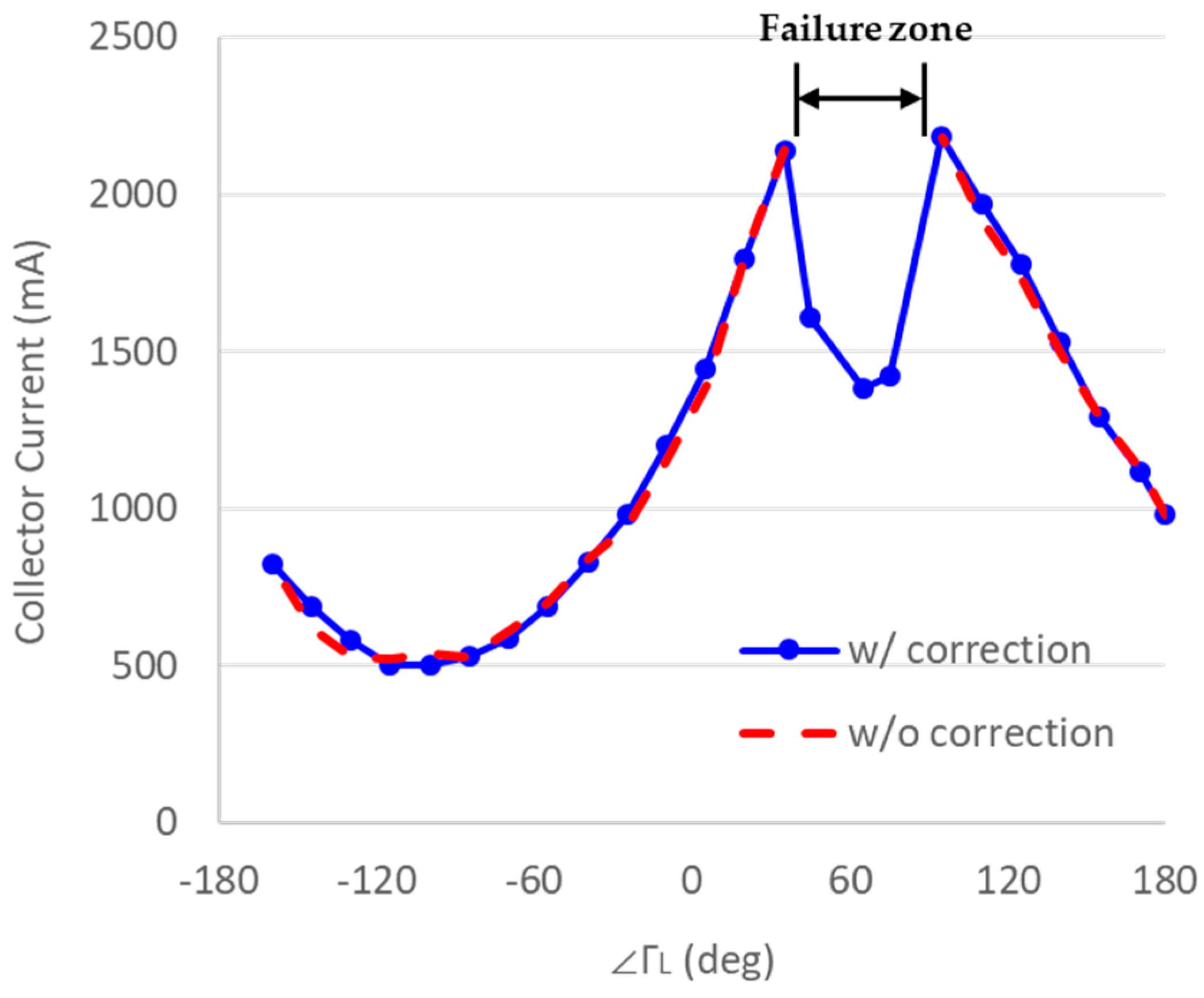
| Iteration (n = 2) | Vsh,5 | Vsh,4 | Vsh,3 | Vsh,2 | Vsh,1 |
|---|---|---|---|---|---|
| 1st ( ― ) | L | H | H | L | L |
| 2nd ( ---- ) | H | L | L | L | L |
| Index | Vph (1st) | Vph (2nd) | Detected section 1 |
|---|---|---|---|
| 1 | L | H | #1 |
| 2 | L | L | #2 |
| 3 | H | H | #3 |
| 4 | H | H | #4 |
| Frequency [MHz] | Supply Voltage [V] | w/o Impedance Correction | w/ Impedance Correction |
|---|---|---|---|
| 1915 | 3.4 | Passed | Passed |
| 1915 | 3.8 | Passed | Passed |
| 1915 | 4.2 | Failed | Passed |
| 1915 | 5.6 | - | Failed |
| 1748 | 3.8 | Passed | Passed |
| 1748 | 4.2 | Passed | Passed |
| 1748 | 4.6 | Failed | Passed |
| 1748 | 5.6 | - | Failed |
© 2019 by the authors. Licensee MDPI, Basel, Switzerland. This article is an open access article distributed under the terms and conditions of the Creative Commons Attribution (CC BY) license (http://creativecommons.org/licenses/by/4.0/).
Share and Cite
Jeon, J.; Kang, M. A Ruggedness Improved Mobile Radio Frequency Power Amplifier Module with Dynamic Impedance Correction by Software Defined Atomization. Electronics 2019, 8, 1317. https://doi.org/10.3390/electronics8111317
Jeon J, Kang M. A Ruggedness Improved Mobile Radio Frequency Power Amplifier Module with Dynamic Impedance Correction by Software Defined Atomization. Electronics. 2019; 8(11):1317. https://doi.org/10.3390/electronics8111317
Chicago/Turabian StyleJeon, Jooyoung, and Myounggon Kang. 2019. "A Ruggedness Improved Mobile Radio Frequency Power Amplifier Module with Dynamic Impedance Correction by Software Defined Atomization" Electronics 8, no. 11: 1317. https://doi.org/10.3390/electronics8111317
APA StyleJeon, J., & Kang, M. (2019). A Ruggedness Improved Mobile Radio Frequency Power Amplifier Module with Dynamic Impedance Correction by Software Defined Atomization. Electronics, 8(11), 1317. https://doi.org/10.3390/electronics8111317






